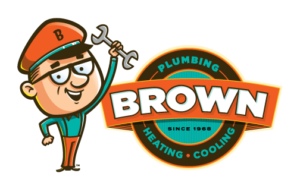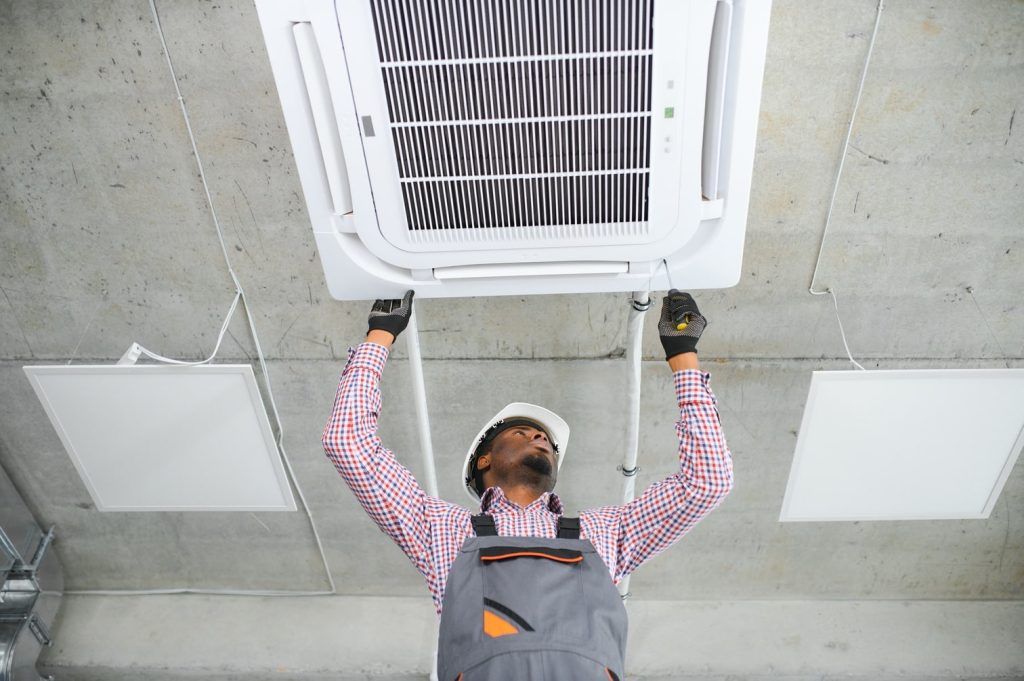Are you considering installing a new HVAC system in your home or business in Hillsborough County?
It’s essential to understand the importance of professional HVAC installation. From ensuring proper sizing and efficiency to compliance with building codes, there are numerous factors to consider.
We will explore the benefits of professional HVAC installation, the process involved, and common mistakes to avoid.
Stay tuned to learn more and make informed decisions for your HVAC project.
What Is HVAC Installation?
Professional HVAC Installation is the process of setting up heating, ventilation, and air conditioning systems by experienced technicians to ensure optimal performance and efficiency.
This crucial process requires specialized knowledge and expertise to properly size and install HVAC equipment according to industry standards. Certified contractors have the skills and training to handle complex installations, ensuring that the system operates efficiently and effectively. By hiring professional installers, homeowners can benefit from quality service and guaranteed workmanship.
A well-installed HVAC system can lead to significant energy savings and improved indoor air quality, providing a comfortable and healthy environment for occupants.
Why Is Professional HVAC Installation Important?
Professional HVAC Installation is crucial for ensuring system performance, energy efficiency, and compliance with building codes to guarantee long-term benefits and customer satisfaction.
When HVAC systems are installed properly by experienced professionals, it not only enhances energy efficiency but also ensures the safety and comfort of homeowners. Compliance with regulations is key to avoiding potential risks and liabilities and providing peace of mind to residents.
The use of reliable service and following proper installation techniques can significantly impact the longevity of the system, reducing the need for frequent repairs and maintenance costs. Warranties play a vital role in protecting homeowners from unforeseen expenses, offering reassurance and support for any potential issues that may arise.
Ensures Proper Sizing and Efficiency
Professional HVAC Installation ensures that systems are sized correctly for optimal efficiency, resulting in significant energy savings and improved performance.
When HVAC systems are not sized properly, they tend to consume more energy than necessary, leading to increased utility costs and unnecessary strain on the system. By matching the size of the HVAC unit to the specific needs of the building, professional installation helps to avoid energy waste and ensures that the system operates at peak efficiency. This not only translates to cost savings for the building owner but also contributes to overall environmental sustainability by reducing carbon emissions associated with excessive energy consumption.
Proper Installation Techniques
Adhering to proper installation techniques is essential in ensuring the safety, efficiency, and longevity of HVAC systems, emphasizing the quality of service provided by professional contractors.
Following industry-standard installation methods not only guarantees the safety of the occupants and the property but also contributes significantly to the optimal performance of the HVAC system. By prioritizing safety protocols and adhering to recommended procedures, professional technicians ensure that the system operates at its best, delivering reliable heating and cooling throughout the year.
This dedication to quality workmanship not only enhances system efficiency but also results in higher customer satisfaction, as clients experience consistent comfort and peace of mind knowing that their HVAC system is in capable hands.
Compliance with Building Codes
Professional HVAC Installation ensures compliance with local building codes and regulations, with licensed technicians providing transparent pricing and adhering to industry standards.
This compliance with building codes is crucial for ensuring the safety and efficiency of HVAC systems in residential and commercial settings. By working with licensed professionals, you can trust that the installation process meets all legal requirements, reducing the risk of potential hazards or costly fines. Certified contractors not only guarantee transparency in pricing but also offer expertise in selecting the right equipment and optimizing system performance. Choosing reputable professionals for HVAC installations not only ensures compliance but also enhances the overall quality and longevity of your heating and cooling systems.
Warranty and Insurance Coverage
Professional HVAC Installation offers warranty coverage and insurance protection, providing customers with peace of mind and reliable customer care throughout the installation process.
By having warranty coverage and insurance protection, homeowners can rest assured that their investment in a new HVAC system is safeguarded against unexpected issues. This level of protection not only ensures peace of mind but also demonstrates the commitment of professional contractors to customer satisfaction.
Warranties play a vital role in the long-term maintenance of HVAC systems, allowing homeowners to schedule routine inspections and repairs without worrying about additional costs. In turn, this proactive approach enhances the reliability and efficiency of the HVAC system, ultimately increasing its lifespan and performance.
What Are the Benefits of Professional HVAC Installation?
Professional HVAC Installation brings numerous benefits, including enhanced energy efficiency, increased comfort levels, significant energy savings, and improved indoor air quality.
Expert installation services provide homeowners with long-term advantages that go beyond the initial installation. Properly installed HVAC systems are more efficient, ensuring that the home is consistently heated or cooled to the desired temperature. This increased efficiency results in lower energy consumption, leading to substantial savings on energy bills over time. Professionally installed systems contribute to improved indoor air quality by ensuring proper ventilation and filtration, creating a healthier living environment for residents.
Increased Energy Efficiency
Professional HVAC Installation results in increased energy efficiency, reducing utility costs and environmental impact while ensuring optimal system performance.
By having your HVAC system professionally installed, you can see significant savings on your monthly utility bills. The improved energy efficiency means that your system operates more smoothly, utilizing less energy to maintain your desired indoor climate. This not only decreases your carbon footprint but also contributes to a greener environment. The overall efficiency improvements gained through professional installation ensure that your HVAC system functions at its best, prolonging its lifespan and reducing the need for costly repairs down the line.
Improved Indoor Air Quality
Professional HVAC Installation enhances indoor air quality by ensuring proper ventilation and filtration, creating a healthier and safer living environment for residents.
With expert installation of HVAC systems, the air circulation in your home is optimized, which helps in reducing allergens and pollutants. By effectively filtering out dust, pet dander, mold spores, and other harmful particles, the indoor air becomes cleaner and fresher, promoting better respiratory health for everyone in the household. Properly installed HVAC systems also control humidity levels, preventing the growth of mold and mildew that can aggravate respiratory conditions. This overall improvement in air quality leads to a more comfortable and conducive living space, ensuring a healthier lifestyle for you and your loved ones.
Longer Lifespan of Equipment
Professional HVAC Installation extends the lifespan of HVAC equipment, reducing the need for frequent repairs and replacements, thereby saving homeowners time and money.
Expert installation techniques play a crucial role in ensuring that the HVAC system operates efficiently and effectively. By having a professional handle the installation process, homeowners can benefit from proper sizing and placement of the equipment, optimal airflow distribution, and accurate calibration. These aspects not only enhance the system’s performance but also contribute to energy savings by maximizing its efficiency. Expertly installed HVAC systems are less prone to malfunctions, leaks, and inefficiencies, resulting in lower overall maintenance costs. Investing in professional installation upfront can lead to long-term financial benefits through increased equipment reliability and reduced repair expenses.
Cost Savings in the Long Run
Professional HVAC Installation leads to significant cost savings in the long run, as energy-efficient systems and proper installation techniques result in lower utility bills and reduced maintenance expenses.
Opting for professional installation services can greatly enhance the overall performance and longevity of your HVAC system. By ensuring that your system is properly sized and installed, you can avoid common issues like improper airflow and system strain. This optimized performance not only leads to a more comfortable indoor environment but also helps prevent the need for costly repairs down the line.
Homeowners who invest in professional HVAC services can enjoy a higher return on their initial investment through improved efficiency and reduced operational costs over time.
What Is the Process of Professional HVAC Installation?
The process of professional HVAC installation involves a comprehensive approach, including assessment, ductwork design, equipment selection, and rigorous testing to ensure optimal system performance.
- During the initial assessment phase, professionals evaluate the property’s specific heating and cooling requirements based on factors like square footage, insulation, and existing infrastructure. This information guides the ductwork design stage, where the layout and sizing of the ducts are meticulously planned to maximize airflow efficiency and minimize energy loss.
- Once the design is finalized, experts carefully select the appropriate HVAC equipment that aligns with the property’s needs and budget constraints.
- Rigorous testing and balancing procedures are then carried out post-installation to fine-tune the system for peak performance and energy efficiency.
Assessment and Sizing
The initial assessment and sizing phase of HVAC installation is critical for determining the right system capacity, ensuring energy efficiency, and meeting the specific needs of the property.
Accurate assessment and sizing not only help in selecting the appropriate HVAC system size but also play a crucial role in optimizing energy usage. By accurately evaluating the requirements of a property, HVAC professionals can create customized solutions that cater to the unique demands of the space, leading to improved energy efficiency and overall performance. Investing time in this phase can result in long-term benefits such as enhanced comfort levels, reduced energy consumption, and significant cost savings over the system’s lifespan.
Ductwork Design and Installation
Ductwork design and installation play a vital role in HVAC systems, ensuring proper ventilation, airflow distribution, and efficient operation of heating and cooling equipment.
Good ductwork design not only helps to maintain optimal indoor air quality but also contributes significantly to temperature regulation within a space. By efficiently distributing heated or cooled air throughout a building, the ductwork system ensures consistent comfort levels for occupants. Properly installed ductwork also plays a crucial role in the overall performance of an HVAC system, reducing energy consumption and minimizing wear and tear on the equipment. In addition to temperature control, ventilation provided by well-designed ductwork ensures adequate fresh air circulation, removing pollutants and odors to create a healthier indoor environment.
Equipment Selection and Installation
Careful equipment selection and precise installation techniques are crucial in ensuring the efficiency, reliability, and safety of HVAC systems, incorporating advanced technology for optimal performance.
- The rapid advancements in HVAC technology have revolutionized the way systems function, with a strong emphasis on energy efficiency and eco-friendly solutions.
- When upgrading or installing HVAC equipment, it is essential to consider factors such as the size of the space, insulation levels, and desired comfort levels.
- Professionals with expert knowledge can provide valuable insights into selecting the right equipment and ensuring seamless installation.
- By integrating smart thermostats, variable-speed motors, and zoning systems, homeowners can experience enhanced comfort, reduced energy consumption, and improved indoor air quality.
Testing and Balancing
The final testing and balancing phase of HVAC installation ensures that systems are operating optimally, with proper airflow, temperature control, and overall system performance.
This crucial phase plays a significant role in maximizing the efficiency of the HVAC system, which directly impacts energy consumption and operational costs.
By fine-tuning airflow and temperature distribution, testing and balancing help maintain consistent comfort levels throughout the home, eliminating hot or cold spots.
A well-balanced system reduces the likelihood of premature wear and tear on components, leading to increased longevity and reliability.
Homeowners benefit from improved indoor air quality, lower utility bills, and peace of mind knowing that their HVAC system is functioning at peak performance.
What Are the Common Mistakes of DIY HVAC Installation?
DIY HVAC Installation often leads to errors such as improper sizing, incorrect ductwork installation, misplaced equipment, and insufficient knowledge of HVAC systems, resulting in compromised efficiency and performance.
Improper HVAC sizing can lead to an overworked system, causing higher energy bills and premature wear and tear on components. Ductwork errors can result in poor airflow and inefficient heating or cooling throughout the premises. Misplaced equipment may obstruct proper airflow or create safety hazards. The lack of expertise in HVAC systems can also result in improper installation, calibration, or maintenance, leading to equipment failures and reduced system longevity. All these pitfalls highlight the crucial need for professional expertise in HVAC installations to ensure optimal system functionality and longevity.
Improper Sizing
One of the common mistakes in DIY HVAC installation is improper sizing, which can lead to reduced energy efficiency, inadequate heating or cooling capacity, and increased operational costs.
Improperly sized HVAC systems not only waste energy but can also result in discomfort due to inconsistent temperatures or poor air quality. When the system’s capacity does not match the property’s requirements, it may struggle to maintain the desired temperature, leading to frequent cycling on and off, which further impacts energy consumption.
A professional assessment is crucial to ensure that the HVAC system is correctly sized for the specific space it serves. By consulting experts, property owners can avoid the pitfalls of improper sizing and enjoy efficient, effective heating and cooling solutions.
Incorrect Ductwork Installation
Incorrect ductwork installation during DIY HVAC projects can result in restricted airflow, inefficient operation, and poor system performance, impacting comfort and energy efficiency.
Without proper airflow optimization due to mistakes in ductwork installation, the HVAC system may struggle to distribute air evenly throughout the space, leading to some rooms being too hot or too cold. Inadequate ventilation quality caused by errors in the ductwork layout can result in poor indoor air quality, potentially causing health issues for inhabitants. The overall system efficiency is compromised, leading to increased energy consumption and higher utility bills. This underscores the essential role of professional ductwork design in ensuring optimal functionality of the HVAC system.
Improper Placement of Equipment
Misplaced equipment due to DIY HVAC installation can disrupt climate control, hinder system performance, and lead to potential safety hazards, compromising the comfort and efficiency of the HVAC system.
Improper placement of HVAC equipment can result in temperature inconsistencies throughout the space, leading to certain areas being too hot or too cold. This can create discomfort for occupants and reduce overall energy efficiency. Airflow disruptions caused by improperly positioned vents or ductwork can further exacerbate these issues, making the system work harder to maintain desired temperatures. Safety concerns also arise when equipment is not correctly placed, such as blocking airflow near flammable materials or obstructing emergency access points. Professional placement ensures that these risks are minimized, contributing to effective climate control and the reliability of the entire HVAC system.
Lack of Knowledge and Experience
Undertaking HVAC installations without sufficient knowledge and experience can lead to mistakes, safety risks, and suboptimal performance, highlighting the importance of seeking professional advice and expertise.
DIY projects may initially seem like a cost-effective solution, but when it comes to HVAC systems, the complexities involved often exceed the capabilities of a novice. Without the necessary know-how, improper installation can result in issues such as inadequate airflow, uneven heating or cooling, and even system breakdowns. These not only compromise the comfort of your living space but also pose potential safety hazards. Relying on expert guidance ensures that your HVAC system operates efficiently, extends its lifespan, and ultimately saves you from costly repairs down the line.


